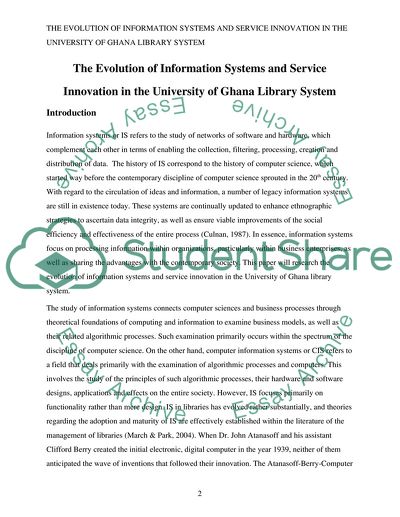Cite this document
(The Evolution of Service Innovation in the University of Ghana Dissertation, n.d.)
The Evolution of Service Innovation in the University of Ghana Dissertation. Retrieved from https://studentshare.org/information-technology/1784602-the-evolution-of-information-systems-and-service-innovation-in-the-university-of-ghana-library-system
The Evolution of Service Innovation in the University of Ghana Dissertation. Retrieved from https://studentshare.org/information-technology/1784602-the-evolution-of-information-systems-and-service-innovation-in-the-university-of-ghana-library-system
(The Evolution of Service Innovation in the University of Ghana Dissertation)
The Evolution of Service Innovation in the University of Ghana Dissertation. https://studentshare.org/information-technology/1784602-the-evolution-of-information-systems-and-service-innovation-in-the-university-of-ghana-library-system.
The Evolution of Service Innovation in the University of Ghana Dissertation. https://studentshare.org/information-technology/1784602-the-evolution-of-information-systems-and-service-innovation-in-the-university-of-ghana-library-system.
“The Evolution of Service Innovation in the University of Ghana Dissertation”, n.d. https://studentshare.org/information-technology/1784602-the-evolution-of-information-systems-and-service-innovation-in-the-university-of-ghana-library-system.


